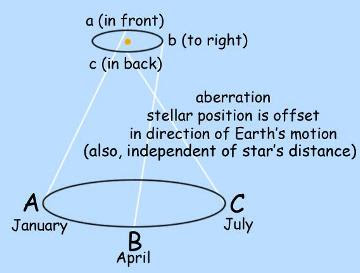 The expansion of the Universe observed by Hubble is commonly connected to a mystical form of dark energy (and/or to a mystical cosmological constant of relativity theory). It is natural to ask if Hubble's observation can be explained by Newtonian mechanics without mysticism?
The expansion of the Universe observed by Hubble is commonly connected to a mystical form of dark energy (and/or to a mystical cosmological constant of relativity theory). It is natural to ask if Hubble's observation can be explained by Newtonian mechanics without mysticism?Hubble observed that far away galaxies appear to recede from the Earth with a velocity V proportional to distance D according to Hubble's Law:
- V = H x D ,
where H is Hubble's constant (about ~ 70 km/s per 1 Mpc ~ 3 million light-years).
Let us assume a Big Bang scenario with the Universe starting out at time T_0 = 0 in a hot dense uniform spherical initial state centered at the origin of a Euclidean coordinate system, and then expanding under a pressure gradient force increasing linearly with the distance to the origin. This could be the force from a (quadratic) pressure satisfying a Poisson equation with constant right hand side connecting to a heat source of constant intensity.
Allowing the Universe to expand from rest under this force for a certain length of time T_1 will bring it into a state with velocity V(r,T_1) increasing linearly with distance r to the origin, that is in accordance with a Hubble Law V(r,T_1) = H_1 r.
Assume now that after time T_1 the expansion force disappears, reflecting that the heat source is no longer active. The Universe will then expand with each galaxy having a constant radial velocity increasing linearly with the distance to the origin at any given time.
Assume now that the galaxies of the Universe visible at a time T > T_1 are observed by an observer at the origin measuring velocity through red-shift and distance by brightness.
Assuming first an infinite speed of light, the observer will thus record
- D(r,T) = r + V(r,T_1) (T-T_1)
- V(r,T) = V(r,T_1) = H_1 r
for a galaxy at distance r at time T_1. Thus
- V(r,T)/D(r,T) = H_1/(1 + H_1(T-T_1)) = H(T) for a galaxy at distance r,
which is again a Hubble Law (recorded at the specific time T), with a modified Hubble constant
H(T).
The conclusion is similar in the case of a finite speed of light causing a linear shift in time of observation depending on the distance to the origin.
We have thus derived a Hubble's Law which is consistent with a Newtonian Big Bang scenario with an initial expansion phase from a uniform hot dense state with accelleration from a pressure force from a constant heat forcing, into a state with expansion velocity proportional to distance, which is then maintained under continued expansion with constant velocity and heat forcing put to zero.
The apparent increase of expansion velocity with distance is here not an effect of a permanent accelleration, but instead a reflection of the linearly increasing velocity of an initial expansion under linearly increasing pressure compatible with a constant heat source.
Notice that the fact that the observer can see only visible galaxies, makes it impossible to detect if the apparent increase of velocity with distance is the effect of (i) a constant contiunued accelleration or (ii) an accelleration during an initial expansion phase after which the expansion force is shut off.
In the case (ii) there is no need to introduce any dark energy to explain Hubble's Law and since (ii) is consistent with observation, by Ockham's razor, it seems to be preferable. We understand that (ii) is a universe with large scale structure governed by inertia and not gravitation, a universe described by Newton's 2nd law.
A similar conclusion is obtained with the Newton law of many-minds relativity of the form
- 1/(1+V) dV/dt = F,
which allows the initial expansion to be exponentially fast with a velocity V(r,t) = exp(rt) which is superlinear in the distance r in accordance with observations of accelerating expansion.























